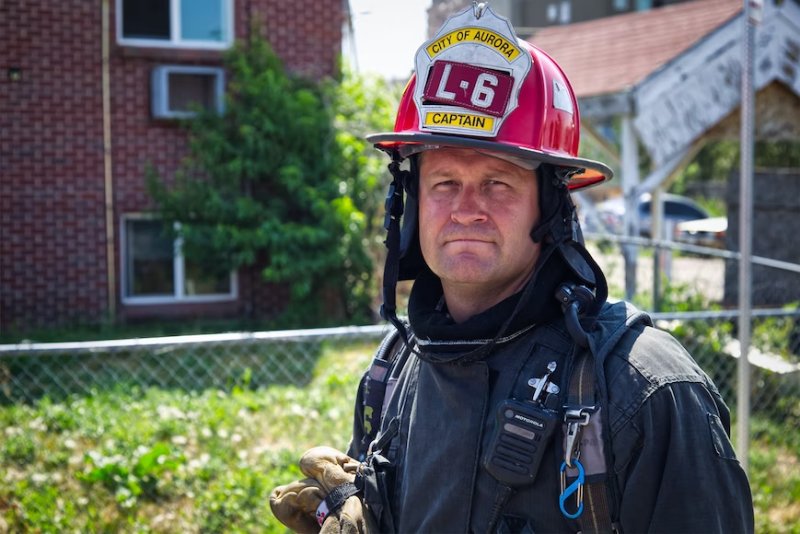Lifestyle
Chemical Warriors: Firefighters Caught in the Crossfire of Cancerous AFFF Foam

When we think of firefighters, we often envision brave individuals fearlessly battling flames to save lives and protect communities. However, there is a hidden danger lurking amidst their valiant efforts – the cancerous threat posed by Aqueous Film-Forming Foam (AFFF).
According to an article published on Firehouse.com, it is now unquestionable that aqueous AFFF carries significant cancer risks. While it possesses impressive fire-suppression abilities, AFFF contains toxic substances that have the potential to pollute drinking water and build up within the human body. This leads to severe forms of cancer and various other illnesses.
These persistent chemicals have been linked to various types of cancer, turning firefighters into unsuspecting victims of occupational hazards. In this article, we will discuss the alarming connection between AFFF foam exposure and increased cancer risks among firefighters.
The Unseen Danger of AFFF Foam Exposure
Firefighters, the fearless heroes who risk their lives to save others, face a hidden threat in the form of Aqueous Film-Forming Foam (AFFF). The product has been used for decades to suppress flammable liquid fires and contains toxic chemicals known as per- and polyfluoroalkyl substances (PFAS).
Recent studies have linked PFAS to various forms of cancer, turning firefighters into unsuspecting victims of occupational hazards.
The Alarming Cancer Connection
Research has uncovered a disturbing correlation between AFFF foam exposure and increased cancer risk among firefighters. According to Clean Water Action, the persistent nature of PFAS chemicals poses a unique danger, as these “forever chemicals” accumulate in the environment and human bodies over time.
Firefighters regularly exposed to foam are at higher risk of developing bladder, breast, colon, kidney, liver, pancreatic, prostate, rectal, testicular, and thyroid cancers.
Occupational Exposure: Who’s at Risk?
As stated in a recent post by the Tribune, the issue surrounding firefighting foam has reached such a critical level that the World Health Organization (WHO) has classified cancer in firefighters as a group 1 occupational hazard. This classification is the highest and most severe, highlighting the extremely elevated levels of cancer-causing agents that firefighters are exposed to during their work.
However, firefighters aren’t the only ones caught in the crossfire of cancerous AFFF foam. Other occupations prone to PFAS exposure include industrial workers in oil refineries, flight deck personnel, firefighting foam manufacturers, foam transporters, and incinerator facility workers involved in foam disposal.
Extending the Statute of Limitations
Given the delayed discovery of AFFF foam’s health risks, many jurisdictions have revised the statute of limitations for affected individuals. These legal measures acknowledge that victims should have additional time to pursue lawsuits once they reasonably connect their cancer diagnosis to foam exposure.
Seeking Justice: AFFF Foam Lawsuits
Those impacted by AFFF foam-related cancer have turned to the legal system to hold manufacturers accountable. Affected individuals have initiated an AFFF firefighting foam lawsuit that aims to seek compensation for medical expenses, pain and suffering, lost wages, and other damages.
Experienced attorneys specializing in firefighting foam cases assist victims in gathering evidence, determining liability, and guiding them through the complex legal process.
According to TruLaw, the firefighting foam lawsuits aim to secure compensation for various damages suffered by the plaintiffs. This includes seeking reimbursement for medical expenses incurred due to the treatment of cancer and other related illnesses.
Additionally, plaintiffs seek compensation for the physical and emotional pain and suffering endured as a result of their conditions. The lawsuits also address the loss of wages and the impact on the plaintiff’s ability to work and earn a livelihood.
Efforts for a Safer Tomorrow
Efforts are underway to find safer alternatives to AFFF foam without compromising firefighting effectiveness. The firefighting community and regulatory agencies are exploring environmentally friendly foam options that mitigate health risks without sacrificing fire suppression capabilities.
Promoting awareness, stringent regulations, and responsible foam disposal practices are crucial steps toward protecting firefighters and the environment from the cancerous crossfire of AFFF foam.
Key Takeaways
The evidence presented in this article sheds light on the grave risks associated with Aqueous Film-Forming Foam (AFFF) exposure for firefighters and other occupations. The link between AFFF foam and increased cancer risks highlights the urgent need for comprehensive preventive measures.
The classification of cancer in firefighters as a group 1 occupational hazard by the World Health Organization underlines the severity of the issue. Extended statute of limitations acknowledges the delayed discovery of health risks and the importance of providing victims with adequate legal recourse.
AFFF foam lawsuits represent a crucial avenue for affected individuals to seek justice and compensation. Efforts towards finding safer alternatives and implementing responsible foam disposal practices are essential for protecting the well-being of firefighters and other vulnerable groups. It is imperative that we prioritize the safety and health of those who selflessly protect our communities.
-

 Sports4 weeks ago
Sports4 weeks agoAl Ahly vs Inter Miami, 2025 FIFA Club World Cup – Preview, Prediction, Predicted Lineups and How to Watch
-
Health3 weeks ago
Back to Roots: Ayurveda Offers Natural Cure for Common Hair Woes
-

 Tech3 weeks ago
Tech3 weeks agoFrom Soil to Silicon: The Rise of Agriculture AI and Drone Innovations in 2025
-

 Startup4 weeks ago
Startup4 weeks agoHow Instagram Is Driving Global Social Media Marketing Trends
-

 Sports3 weeks ago
Sports3 weeks agoFIBA 3×3 World Cup 2025: Full Schedule, Preview, and How to Watch
-

 Science4 days ago
Science4 days agoJuly Full Moon 2025: Everything You Should Need to Know, When and Where to See Buck Moon
-

 Gadget3 weeks ago
Gadget3 weeks agoThings to Know about Samsung Galaxy S26: What’s New and What’s Next
-

 Sports4 weeks ago
Sports4 weeks agoWorld Judo Championships 2025: Full Schedule, Date, Time, Key Athletes and How to Watch













